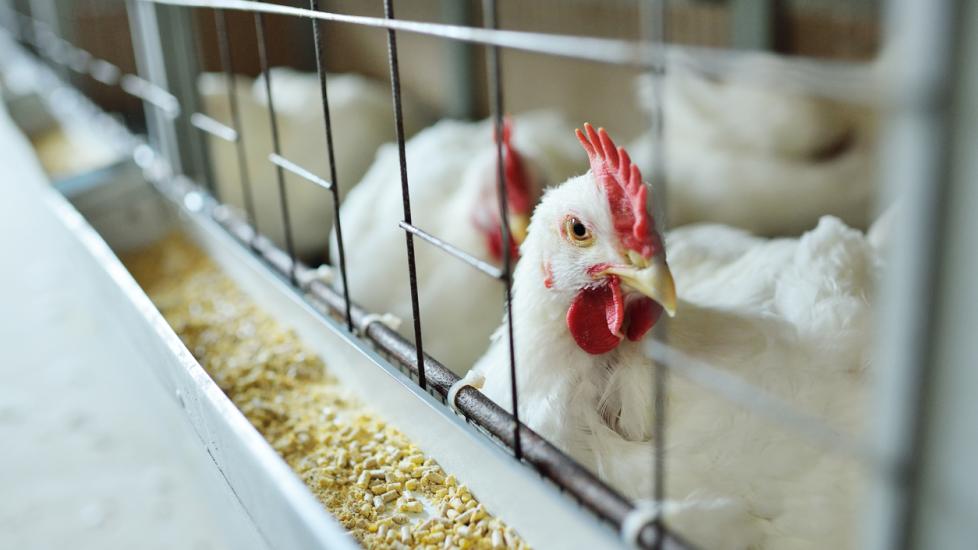Bird Flu in Chickens and Other Birds
What Is Bird Flu in Birds?
Bird flu, also known as avian flu, is a viral infection of avian species. Each strain usually affects a smaller number of bird species more severely, but the virus is prone to mutation, including jumping to non-avian species like cows, coyotes, foxes, and cats. Bird flu strains are typically categorized as having high or low pathogenicity (ability to produce disease).
Symptoms of Bird Flu in Birds
Low Pathogenic Signs
-
Asymptomatic (showing no symptoms)
-
Mild decrease in egg production (less than 25%)
-
Thin shelled or misshapen eggs
-
Decreased water or food consumption
-
Poor temperature regulation
-
Wheezing, clicking, or other respiratory sounds
-
Nasal discharge
-
Swollen eyelids
With low bird flu strains, birds may be sick for days to weeks but typically return to normal with aid of a veterinarian.
High Pathogenic Signs
-
Significant inappetence or anorexia
-
No egg production
-
Watery diarrhea
-
Ataxia (poor muscle control)
-
Torticollis (twisted neck posture)
-
Mucous in the airway to the level of obstructing airflow
-
Sudden death
With high pathogenic strains, symptoms often present 24-48 hours before death and sometimes onset of death is so fast that no symptoms have time to present.
Causes of Bird Flu in Birds
Any bird species can contract bird flu, but certain species tend to contract specific strains more than others. Symptoms differ between egg laying poultry such as chickens, and differ from other birds commonly affected such as ducks and geese.
Chickens are the most susceptible to severe disease/high pathogenic strains. The most common presentation in chickens is sudden death, while birds like ducks and geese tend to show respiratory symptoms.
Broiler, or meat chickens, often get less severely ill, while all other poultry are more likely to present similarly to egg laying chickens, though disease will often last a couple days longer.
Transmission to exposed birds is about 100% with most being infected within 2-12 days of first signs of illness in the first bird. While mortality rates from low pathogenic strains are generally low, the mortality rate for high pathogenetic strains is also about 100%.
Bird flu is shed in the feces and respiratory secretions of infected birds. Transmission most commonly occurs through shared drinking water or airborne transmission for birds in close proximity.
How Veterinarians Diagnose Bird Flu in Birds
Veterinarians use a combination of symptoms, antigen, and PCR tests to diagnose bird flu. Unfortunately, due to the speed at which it progresses, the disease is often diagnosed after death.
Treatment of Bird Flu in Birds
There are no effective treatments for bird flu. In mild cases, especially in pet birds, treatment consists of relieving symptoms. This can include:
-
Antibiotics for secondary bacterial infections or pneumonias
-
Cough suppressants
-
Medications that decrease mucous production
-
Providing heat sources
-
Keeping the environment extra clean
In infected flocks, there are specific eradication protocols in place to help reduce spread from farm to farm. Vaccine research is ongoing to prevent outbreaks before they happen, but cost-effective vaccines that can be used across large flocks are still in development and not currently available.
Current bird flu vaccines are limited in efficacy. These vaccines seem to help but haven’t been able to prevent outbreaks outright. The good news is that common pet bird species such as parrots and songbirds rarely acquire severe disease and can be treated.
Recovery and Management of Bird Flu in Birds
Most birds that contract a low pathogenic strain of the bird flu will recover within a couple weeks of infection. While they are recovering, it is important to keep them separated from all other birds and be careful of transmitting the virus from your clothes, shoes, etc. If your bird is showing any symptoms of bird flu, mild or severe, contact your veterinarian immediately as outbreaks of bird flu must be carefully monitored to prevent mass death events.
Help your pet bird recover by:
-
Deep cleaning your bird’s enclosure daily
-
Providing an additional heating source they can utilize if they’re having trouble regulating their body temperature
-
Cleaning their water source daily
-
Working with your veterinarian by reporting any immediate symptoms
Birds that manage to survive severe infections may have long-term scarring of the lungs or failure to thrive as well as they did before the infection.
Prevention of bird flu consists of not handling sick birds and always calling the local veterinarian or wildlife organization if you encounter a sick bird. Vaccines are the best way to prevent spread amongst birds.
If you encounter a sick bird or have an unusual death event of a bird in the United States, report it to the USDA at 1-866-536-7593.
Bird Flu in Birds FAQs
Can birds survive avian flu?
Birds that contract a low pathogenic strain of bird flu will almost certainly recover, while birds that contract a high pathogenic strain of bird flu will almost certainly not. Certain species are more prone to infection than others.
Can humans catch bird flu from birds?
Yes. They can also catch it from other species, but this is less common. Long-term health effects are possible for people who contract the disease. There is currently no vaccine for bird flu in humans to prevent infection.
References
Swayne DE. Veterinary Information Network. Avian Influenza. 2008.
Featured Image: iStock.com/Kalinovskiy
